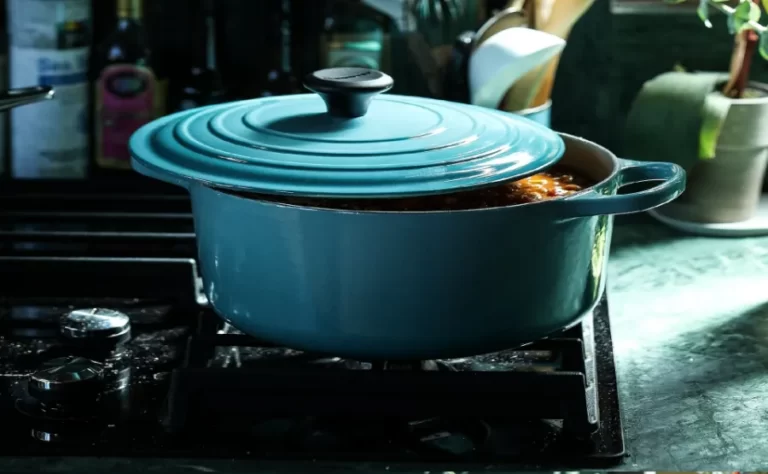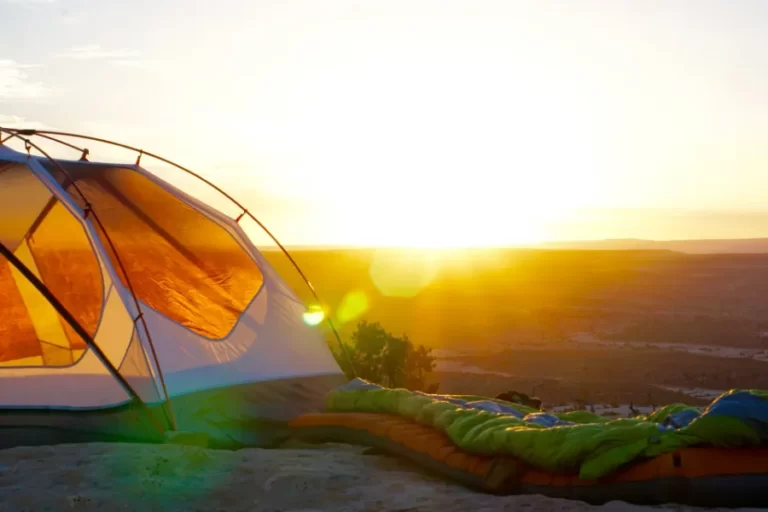What Temperature do you Need for a Sleeping Bag? – The Ultimate Guide

Last updated on August 13th, 2024 at 12:05 am
All sleeping bags come with a temperature rating. Therefore, if you are in the market for one, you may not be so sure what the temperature ratings mean and their relation to where and when you are planning to use the sleeping bag. So, what temperature do you need for a sleeping bag?
Temperature ratings on sleeping bags are there to guide you. They are not as accurate and hence you need to consider other factors when selecting one. The ideal temperature varies from person to person and the temperature of the area you are sleeping in.
This article gives an in-depth explanation of temperature ratings and how you can choose an appropriate one for your needs.
Finding the Perfect Temperature Range for Your Sleeping Bag

The temperature ratings on sleeping bags are essential guides when you are looking for one for your next outdoor activity. Many of us do not take them seriously and think that a sleeping bag rated 0 degrees is equally capable of keeping us warm in the snow.
Still, different people feel cold differently, and therefore, the ratings may not be as accurate. They just help us to choose the right bag for the task ahead.
Sleeping bag ratings vary widely from negative to positive. Before choosing a sleeping bag, you need to put into consideration a few factors. Firstly, do you often sleep outdoors when it is warm or cold, and whether you are sleeping in a tent or outside?
Temperature ratings
+5 to +10 degrees
Sleeping bags with these ratings are considered summer bags. Their level of warmth can be described as sleeping under a light blanket or a sheet.
0-degrees sleeping bags
These bags are all-rounded, but still unlikely to keep you warm enough during a frosty or snowy night. They can be described as sleeping with a doona at home.
-5 to -10 degrees
These bags are considered winter bags, ideal for Australian climates. They can be likened to having more than one blanket or flannelette sheets.
EN/ISO Temperature Ratings
To obtain the ratings, manufacturers independently test each sleeping bag. The ratings are based on R values, which are basically measurements of insulation. An alternative criterion is where manufacturers perform real-world testing on one sleeping bag and apply the same formula on the rest.
Bags tested to the EN (European) standard or ISO (international standard) is considered the most accurate. The testing is usually conducted in a static and controlled environment which involves a dummy with temperature sensors being placed inside the sleeping bag.
Therefore, unlike a dummy, you need to leave room for some allowances based on your physiological makeup.
The EN/ISO standard has three temperature ratings:
Comfort– this refers to the temperature at which a standard woman can sleep comfortably in a relaxed position without feeling cold.
Lower limit– it is the temperature that the standard man starts to feel cold without necessarily shivering even in a curled position. This is the performance limit of a sleeping bag.
Extreme– at this temperature, anyone can feel cold, and there is an increased risk of hypothermia. These sleeping bags should only be used in case of emergencies.
Things to consider when selecting a sleeping bag to keep you warm
1. Generally, the temperature rating refers to the temperature that is likely to wake you up. You are likely to start feeling cooler as the external temperature gradually approaches the temperature rating. Therefore, it is important to have a temperature buffer.
2. For starters, you need to assess how often you sleep outdoors and the lowest temperatures you tend to encounter.
3. Adding buffers is recommended to ensure optimum warmth when you sleep. The type of buffer depends on how you sleep.
For instance, warm sleepers should go for the EN/ISO tested ‘Comfort Rating’ to start with. Besides the comfort rating, they should get a sleeping bag with a temperature rating that is 5 degrees less than the lowest temperature recorded in the area they are planning to sleep in.
Cold sleepers should consider the EN/ISO tested ‘Lower Limit’ as well as choose a bag that is between 5 to 10 degrees lower than the lowest temperature recorded in the area they are planning to sleep in.
4. It is important to note that it is possible to increase a sleeping bag’s comfort range by the addition of liners for additional warmth. Alternatively, you can use it as a doona by sleeping with it unzipped during the extreme temperatures that may be encountered occasionally.
5. Personal judgment is instrumental in selecting an appropriate sleeping bag. As earlier mentioned, the temperature ratings may not be exact. Therefore, you can go with your gut after considering the temperature of the camping grounds.
6. Whereas you can shed extra layers or unzip your bag when it is hot, there is not much you can do when it is freezing cold.
How much does a synthetic sleeping bag cost?
Synthetic sleeping bags fall into three categories; summer, winter, and three-season. The summer sleeping bags are the cheapest, and they go around $20.
They are conveniently lightweight with a temperature rating of 30 degrees Fahrenheit and higher. A common feature is an all-around zipper for enough ventilation.
3-season bags are ideal for spring and fall. Their temperature rating is usually 20 degrees Fahrenheit and higher. They tend to be expensive, but you can find an inexpensive one at $150. Basic features include a draft collar, cinchable hood, and zipper-draft tubes.
Winter sleeping bags are rated 20 degrees Fahrenheit and below. They have added insulation to protect you from hypothermia. These are the most expensive bags and start at around $300.
FAQs
Conclusion
The temperature rating that is ideal for an individual solely depends on them. Laboratory testing and ratings should not be depended on as the final deal.
Take note that cheaper brands may rate a bag more generously than it actually is to deceive buyers. The EN/ISO standards are more accurate and can be used to gauge other ratings.
You Can Also Read:
- Why Go Camping with Blankets Instead of Sleeping Bags
- What Temperature do you Need for a Sleeping Bag
- Can I Sleep in My Car at a Campsite
- How to Stay Warm Camping in 30-Degree Weather
- Why Do My RV Lights Dim and Brighten? Understanding Voltage Fluctuations - February 8, 2024
- What Happens When RV Furnace Runs Out of Propane: Avoiding the Chill on Your Trip - February 8, 2024
- How Much Does an RV Inspection Cost: Budgeting for Your Next Adventure - February 8, 2024






